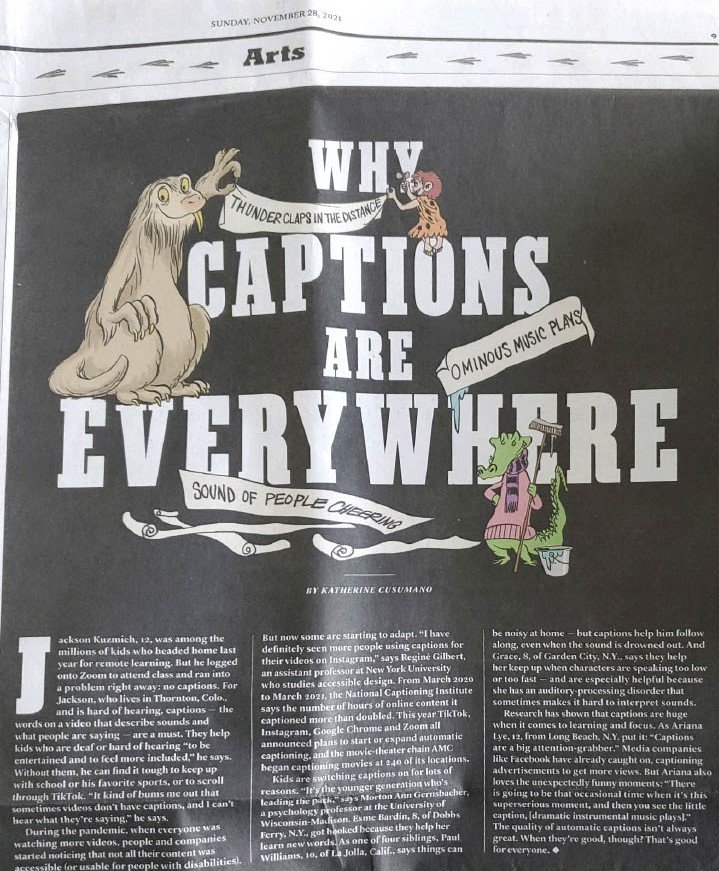NCI in NYT Kids
National Captioning Institute had the pleasure of meeting with New York Times for Kids, a monthly print-only section that helps your kids understand the world, to discuss the captioning! We received permission from the author to share it with you. Enjoy!
Accessibility Text:
SUNDAY NOVEMBER 28, 2021
WHY CAPTIONS ARE EVERYWHERE
BY KATHERINE CUSUAIANO
Jackson Kuzmich, 12, was among the millions of kids who headed home last year for remote learning. But he logged onto Zoom to attend class and ran into a problem right away: no captions. For Jackson, who lives in Thornton, Colo. and is hard of hearing, captions the words on a video that describe sounds and what people are saying --are a must. They help kids who are deaf or hard of hearing "to be entertained and to feel more included," he says. Without them, he can find it tough to keep up with school or his favorite sports, or to scroll through TikTok. "It kind of bums me out that sometimes videos don't have captions, and I can't hear what they're saying," he says.
During the pandemic, when everyone was watching more videos, people and companies started noticing that not all their content was assessible for usable for people with disabilities. But now some are starting to adapt. "I have definitely seen more people using captions for their videos on Instagram," says Regine Gilbert, an assistant professor at New York University who studies accessible design. From March 2020 to March 2021, the National Captioning Institute says the number of hours of online content it captioned more than doubled. This year TikTok, Instagram, Google Chrome and Zoom all announced plans to start or expand automatic captioning, and the movie theater chain AMC began captioning movies at 240 of its locations.
Kids are switching captions on for lots of reasons. "It's the younger generation who's leading the puck." says Morton Ann Gernsbacher, a psychology professor at the University of Wisconsin-Madison. Esme Bardin, 8, of Dobbs Ferry, N.Y., got hooked because they help her learn new words. As one of four siblings, Paul Williams, 10, of La Jolla, Calif., says things can be noisy at home - but captions help him follow along, even when the sound is drowned out. And Grace, 8, of Garden City, N.Y., says they help her keep up when characters are speaking too low or too fast- and are especially helpful because she has an auditory processing disorder that sometimes makes it hard to interpret sounds.
Research has shown that captions are huge when it comes to learning and focus. As Ariana Lye, 12. from Long Beach, NY. put it: Captions are a big attention-grabber." Media companies like Facebook have already caught on, captioning advertisements to get more views. But Ariana also loves the unexpectedly funny moments: "There is going to be that occasional time when it's this superserious moment, and then you see the little caption. [dramatic instrumental music plays]." The quality of automatic captions isn't always great. When they're good, though? That's good for everyone.

